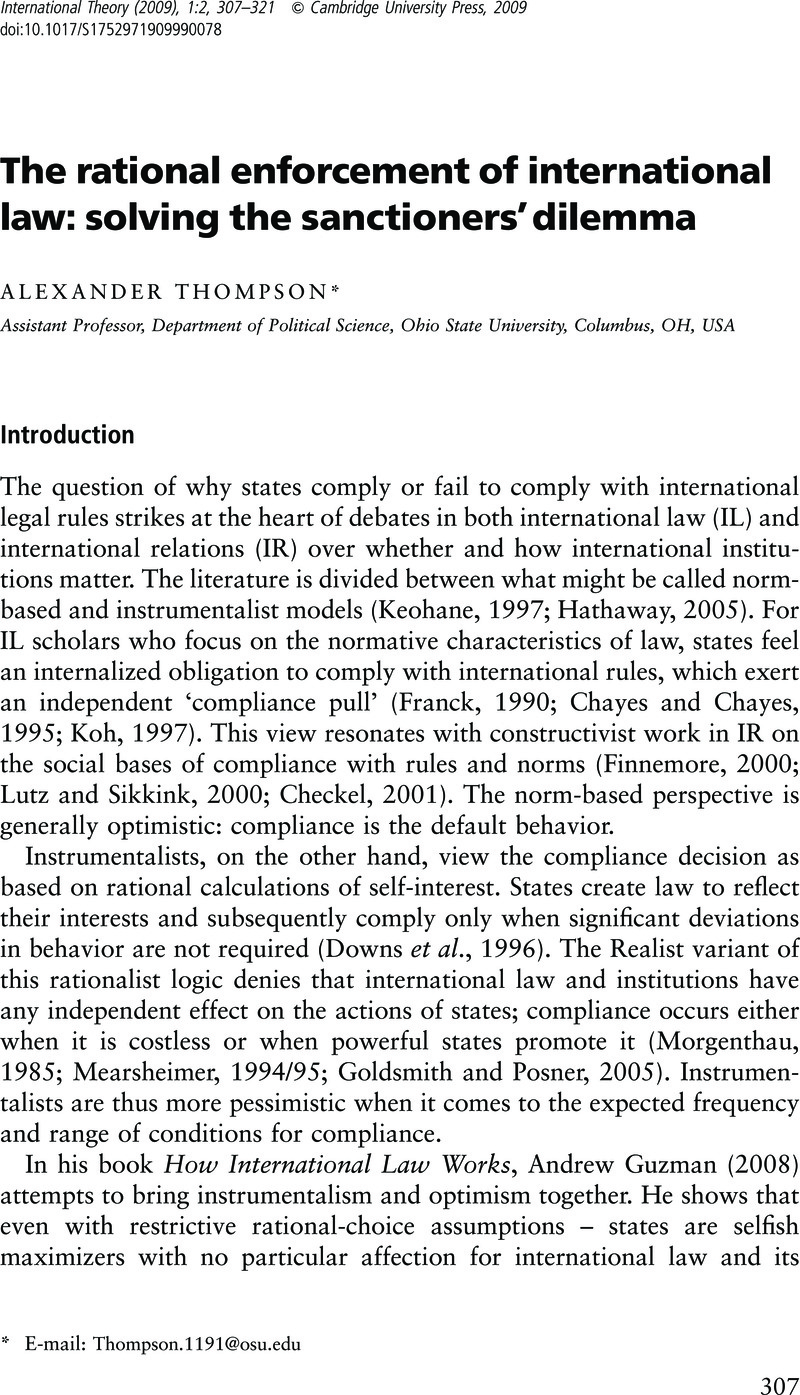Crossref Citations
This article has been cited by the following publications. This list is generated based on data provided by Crossref.
Guzman, Andrew T.
2009.
How international law works: a response to commentators.
International Theory,
Vol. 1,
Issue. 2,
p.
335.
Sylvest, Casper
2010.
Realism and international law: the challenge of John H. Herz.
International Theory,
Vol. 2,
Issue. 3,
p.
410.
Koremenos, Barbara
2011.
Institutionalism and International Law.
SSRN Electronic Journal,
Koremenos, Barbara
2012.
Interdisciplinary Perspectives on International Law and International Relations.
p.
59.
Koremenos, Barbara
and
Betz, Timm
2012.
Interdisciplinary Perspectives on International Law and International Relations.
p.
371.
Thompson, Alexander
2012.
Interdisciplinary Perspectives on International Law and International Relations.
p.
502.
Brewster, Rachel
2012.
Interdisciplinary Perspectives on International Law and International Relations.
p.
524.
von Stein, Jana
2012.
Interdisciplinary Perspectives on International Law and International Relations.
p.
477.
Verones, Cristina
2013.
Rule of Law for Nature.
p.
275.
Hakimi, Monica
2013.
Unfriendly Unilateralism.
SSRN Electronic Journal,
Hafner-Burton, Emilie Marie
LeVeck, Brad L.
and
Victor, David G.
2015.
How the Prospect of Non-Compliance Affects Elite Preferences for International Cooperation: Evidence from a 'Lab in the Field' Experiment.
SSRN Electronic Journal,
Bower, Adam
2015.
Norms Without the Great Powers: International Law, Nested Social Structures, and the Ban on Antipersonnel Mines.
International Studies Review,
p.
n/a.
Hallwood, Paul
2016.
International Public Law and the Failure to Efficiently Manage Ocean Living Resources.
Marine Resource Economics,
Vol. 31,
Issue. 2,
p.
131.
O’Mahoney, Joseph
2017.
Proclaiming Principles: The Logic of the Nonrecognition of the Spoils of War.
Journal of Global Security Studies,
Vol. 2,
Issue. 3,
p.
204.
Hafner-Burton, Emilie M.
LeVeck, Brad L.
and
Victor, David G.
2017.
No False Promises: How the Prospect of Non-Compliance Affects Elite Preferences for International Cooperation.
International Studies Quarterly,
Vol. 61,
Issue. 1,
p.
136.
Erickson, Jennifer L.
2020.
Punishing the violators? Arms embargoes and economic sanctions as tools of norm enforcement.
Review of International Studies,
Vol. 46,
Issue. 1,
p.
96.
Reinsberg, Bernhard
and
Westerwinter, Oliver
2021.
The global governance of international development: Documenting the rise of multi-stakeholder partnerships and identifying underlying theoretical explanations.
The Review of International Organizations,
Vol. 16,
Issue. 1,
p.
59.
von Staden, Andreas
2022.
The Conditional Effectiveness of Soft Law: Compliance with the Decisions of the Committee against Torture.
Human Rights Review,
Vol. 23,
Issue. 4,
p.
451.
Schmidt, Averell
2023.
Damaged Relations: How Treaty Withdrawal Impacts International Cooperation.
American Journal of Political Science,
Rowan, Sam S.
2024.
Effective climate clubs require ambition, leverage and insulation: Theorizing issue linkage in climate change and trade.
The Review of International Organizations,



